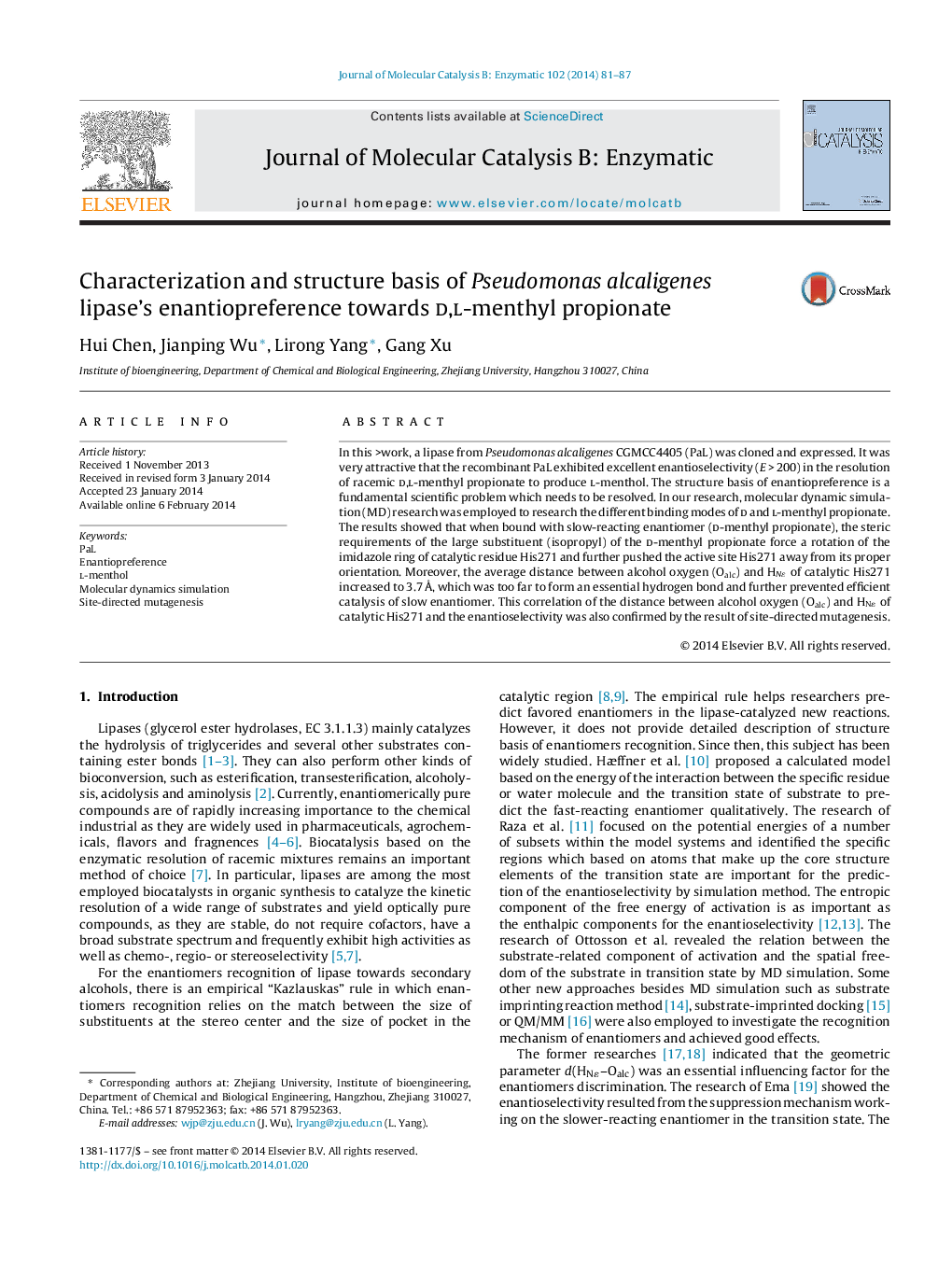| Article ID | Journal | Published Year | Pages | File Type |
|---|---|---|---|---|
| 69680 | Journal of Molecular Catalysis B: Enzymatic | 2014 | 7 Pages |
•The structure of a novel lipase was characterized.•Computational method identified the structure basis of enantioselectivity.•The structure basis of enantioselectivity was verified by site-directed mutation.
In this >work, a lipase from Pseudomonas alcaligenes CGMCC4405 (PaL) was cloned and expressed. It was very attractive that the recombinant PaL exhibited excellent enantioselectivity (E > 200) in the resolution of racemic d,l-menthyl propionate to produce l-menthol. The structure basis of enantiopreference is a fundamental scientific problem which needs to be resolved. In our research, molecular dynamic simulation (MD) research was employed to research the different binding modes of d and l-menthyl propionate. The results showed that when bound with slow-reacting enantiomer (d-menthyl propionate), the steric requirements of the large substituent (isopropyl) of the d-menthyl propionate force a rotation of the imidazole ring of catalytic residue His271 and further pushed the active site His271 away from its proper orientation. Moreover, the average distance between alcohol oxygen (Oalc) and HNɛ of catalytic His271 increased to 3.7 Å, which was too far to form an essential hydrogen bond and further prevented efficient catalysis of slow enantiomer. This correlation of the distance between alcohol oxygen (Oalc) and HNɛ of catalytic His271 and the enantioselectivity was also confirmed by the result of site-directed mutagenesis.
